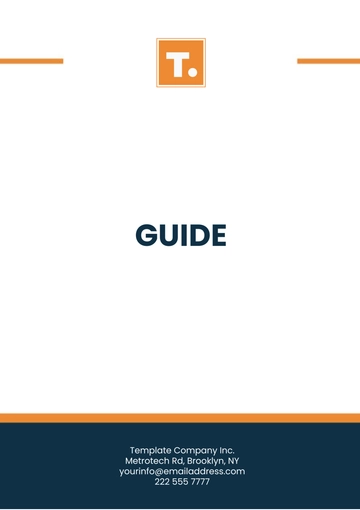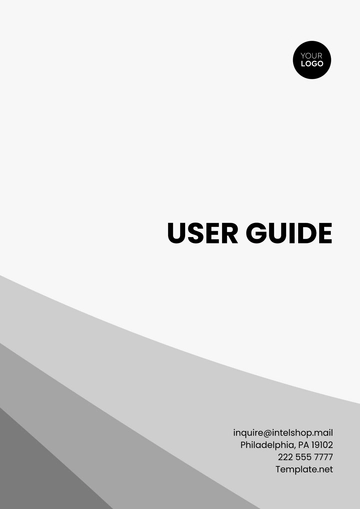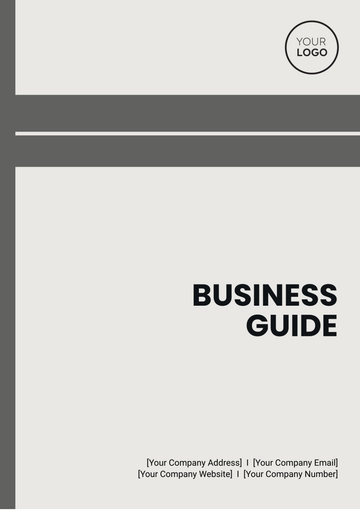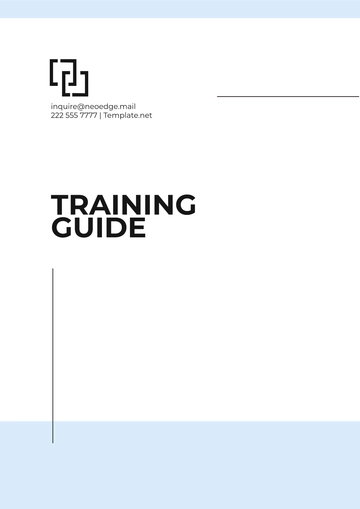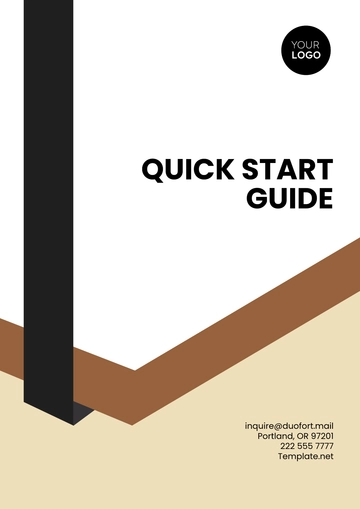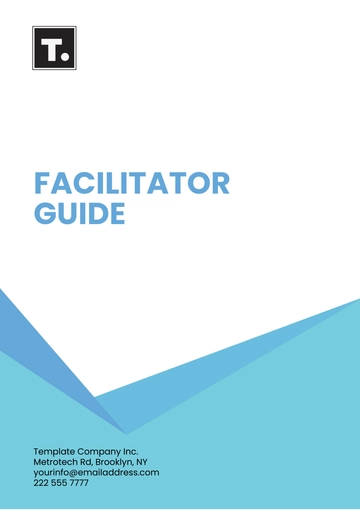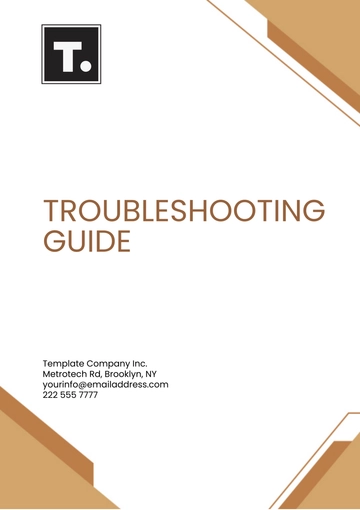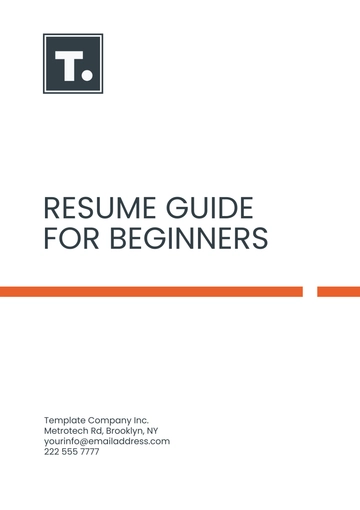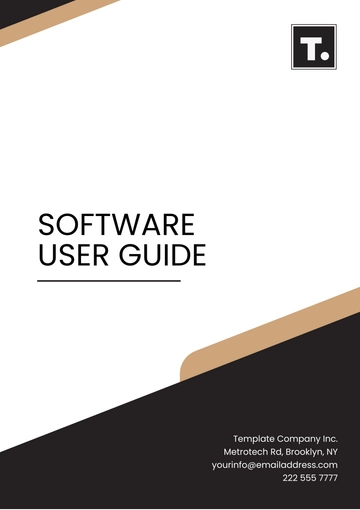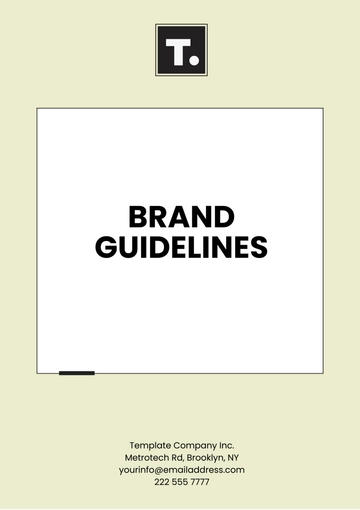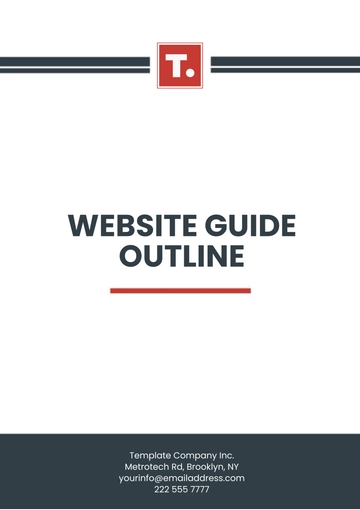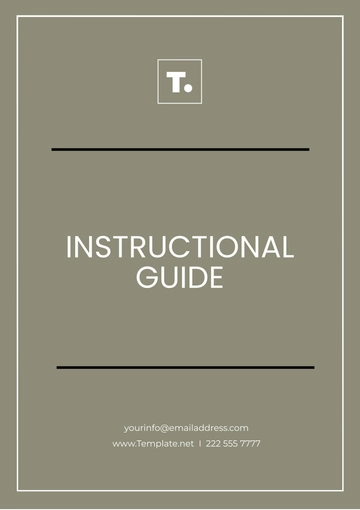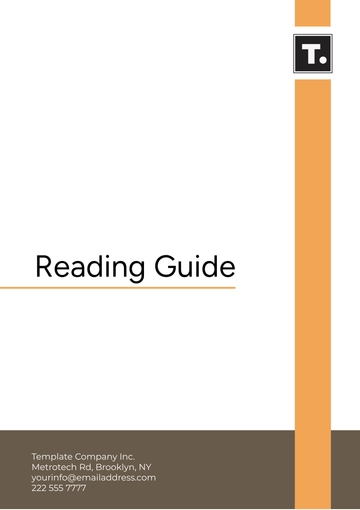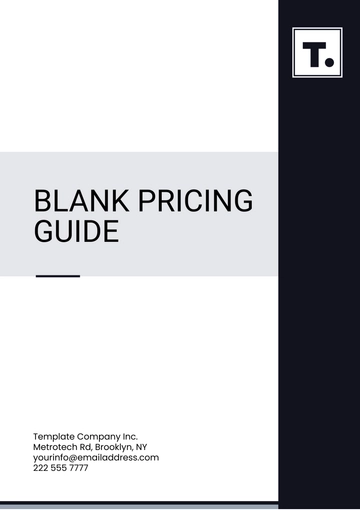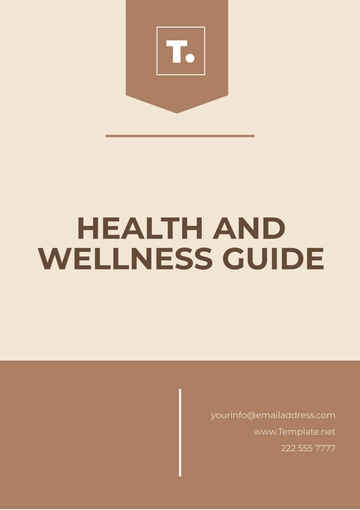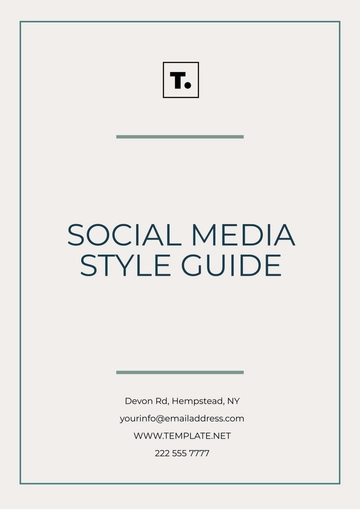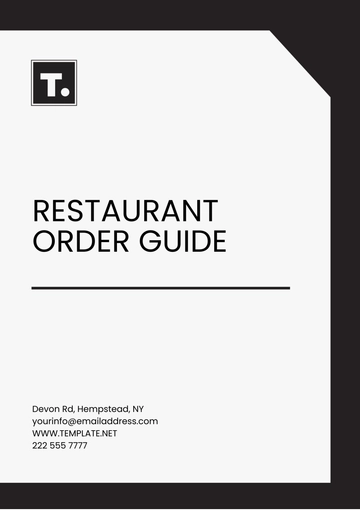Free Professional Bakery Cleaning Guideline
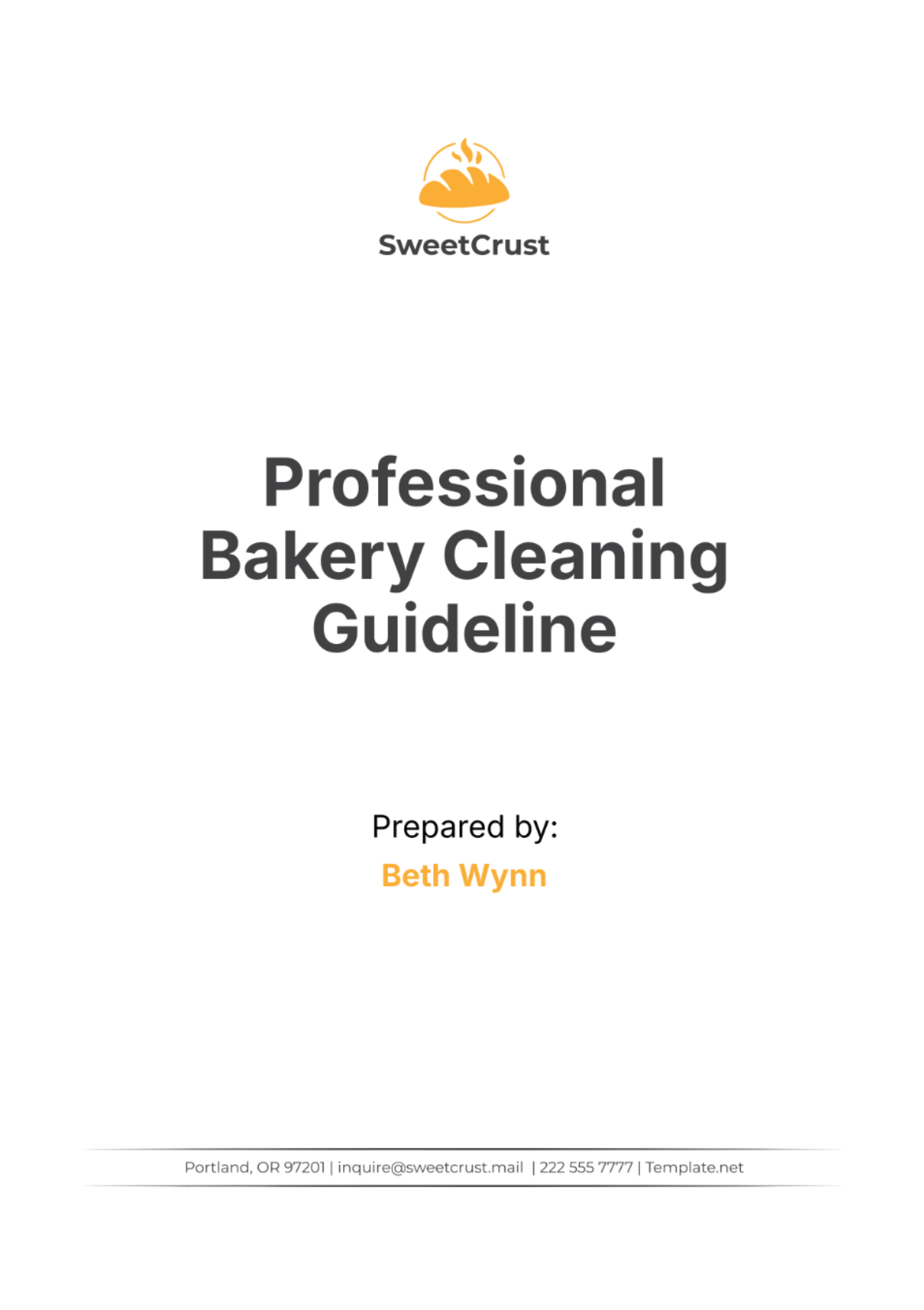
I. Introduction
A. Purpose
The purpose of this guideline is to establish comprehensive cleaning and sanitation procedures to ensure a consistently hygienic environment in our bakery. Adhering to these practices helps prevent foodborne illnesses and maintains a high standard of quality for our products. It also ensures compliance with food safety regulations and protects the health of both customers and staff. Regular adherence to these guidelines will promote a safe and efficient working environment.
B. Scope
This guideline covers all areas within the bakery, including food preparation areas, cooking equipment, storage rooms, and employee facilities. It is applicable to all bakery operations and personnel involved in cleaning tasks. The scope also extends to cleaning agents and equipment used in the process. All employees are required to follow these procedures to maintain uniformity and effectiveness in our cleaning practices.
C. Importance of Cleaning and Sanitation
Cleaning and sanitation are essential to prevent contamination and ensure that bakery products meet safety standards. Proper cleaning practices minimize the risk of foodborne pathogens and allergens, safeguarding consumer health. Consistent sanitation also helps in maintaining the overall quality and freshness of bakery items. By upholding these standards, we reinforce our commitment to food safety and customer satisfaction.
II. Cleaning Schedule
A. Daily Cleaning Tasks
Work Surfaces
Clean and sanitize all work surfaces before and after each use to prevent cross-contamination. Use approved food-safe cleaners and ensure surfaces are dried completely. Regularly inspect surfaces for any residual food particles or stains. Document each cleaning task in the daily log to ensure accountability.
Equipment
Wipe down and sanitize all equipment, such as mixers and ovens, at the end of each shift to remove food residues and prevent bacterial growth. Disassemble equipment as needed for thorough cleaning, ensuring that all parts are accessible and cleaned. Check for any signs of wear or damage during the cleaning process. Log cleaning activities and any equipment issues in the maintenance record.
Floors
Sweep and mop floors daily to remove debris and spills that could lead to slips or contamination. Use a designated floor cleaner and ensure the floor is completely dry before resuming operations. Pay extra attention to areas prone to spills or heavy traffic. Document cleaning activities in the floor cleaning log to track frequency and effectiveness.
Waste Disposal
Empty trash bins regularly and replace liners to prevent odors and potential pest issues. Dispose of waste according to local regulations and ensure that hazardous materials are handled properly. Clean and sanitize waste bins as part of the daily routine. Keep records of waste disposal activities to ensure compliance and monitor waste management.
B. Weekly Cleaning Tasks
Deep Cleaning of Equipment
Perform a detailed cleaning of all baking equipment, including ovens, mixers, and dough rollers. Disassemble components as necessary and use appropriate cleaning agents to remove stubborn residues. Inspect equipment for functionality and any signs of wear or malfunction. Document the completion of deep cleaning tasks and any maintenance performed.
Storage Areas
Clean and organize storage areas, including shelves, containers, and floor surfaces. Ensure that all food items are stored properly and check for expired or damaged goods. Sanitize storage areas to prevent pest infestations and contamination. Keep records of storage area inspections and cleaning activities.
Ventilation Systems
Inspect and clean ventilation systems, including hoods and filters, to ensure proper airflow and prevent buildup of grease and dust. Replace or clean filters according to manufacturer recommendations. Regular maintenance of ventilation systems helps improve air quality and reduce fire hazards. Record all inspections and maintenance activities for tracking purposes.
C. Monthly Cleaning Tasks
Thorough Inspection and Maintenance
Conduct a comprehensive inspection of all bakery equipment and facilities to identify any issues or areas needing repair. Perform necessary maintenance or repairs to keep equipment in optimal condition. Review the effectiveness of current cleaning practices and make adjustments as needed. Document inspection results and any corrective actions taken.
Pest Control Measures
Review and implement pest control measures, including inspecting for signs of pest activity and ensuring traps and baits are in place. Coordinate with pest control professionals for any necessary treatments. Update pest control records to track activity and effectiveness. Ensure all staff are aware of and follow pest prevention protocols.
Review of Cleaning Procedures
Evaluate the current cleaning procedures to ensure they are effective and up-to-date with industry standards and regulations. Solicit feedback from staff on the practicality and efficiency of the procedures. Update guidelines based on feedback and any changes in health regulations. Maintain records of reviewed and updated procedures.
III. Cleaning Procedures
A. General Procedures
Preparation
Gather all necessary cleaning supplies, including cleaners, tools, and PPE, before starting any cleaning task. Ensure that supplies are in good condition and readily accessible. Prepare a cleaning plan outlining specific tasks and areas to be cleaned. Communicate the plan to all involved staff members to ensure coordination.
Execution
Follow the established cleaning procedures for each area or piece of equipment. Use approved cleaning agents and tools to effectively remove dirt, grime, and contaminants. Pay attention to detail and ensure all surfaces and equipment are thoroughly cleaned and sanitized. Regularly check progress and address any issues that arise during cleaning.
Post-Cleaning Inspection
After completing cleaning tasks, inspect the cleaned areas to ensure they meet established hygiene standards. Check for any missed spots or areas that may need additional cleaning. Address any issues promptly and document the inspection results. Ensure that the area is left in a clean and sanitary condition before resuming normal operations.
B. Specific Areas
Food Preparation Areas
Clean countertops, cutting boards, and utensils with hot, soapy water and sanitize with a food-safe disinfectant. Keep surfaces clean, check and replace worn utensils, and log cleaning activities and issues.
Baking Equipment
Disassemble and thoroughly clean equipment such as ovens, mixers, and dough machines to remove grease and food residues. Use proper cleaning agents, dry all parts fully, inspect for damage, and document cleaning and repairs.
Storage Rooms
Wipe down shelves and containers in storage rooms and sanitize floors to prevent contamination. Check for expired or damaged products and discard them per guidelines, keep storage organized, and document all cleaning and inspections.
Restrooms
Clean and sanitize toilets, sinks, and floors in restrooms using effective cleaning agents. Refill supplies, check for issues, and document cleaning to keep restrooms hygienic and maintained.
C. Handling and Disposal of Waste
Types of Waste
Separate waste into categories such as food scraps, recyclables, and general trash to facilitate proper disposal. Make sure all waste types go into the right bins to prevent contamination by using clearly labeled containers for correct sorting, and regularly review waste management procedures to comply with regulations.
Proper Disposal Methods
Follow local regulations for the disposal of waste, including food scraps, recyclables, and hazardous materials. Make sure that all waste is properly disposed of in designated areas, bins are emptied regularly, and waste bins are cleaned and sanitized as part of the routine cleaning to prevent odors and pests; also, keep records of waste disposal activities and regulatory compliance.
Recycling Practices
Implement recycling practices to reduce the environmental impact of waste. Educate staff on proper recycling procedures and ensure that recyclable materials are collected and sorted correctly. Collaborate with recycling service providers to manage the disposal of recyclable materials. Document recycling efforts and track the volume of materials recycled.
IV. Cleaning Supplies and Equipment
A. Cleaning Agents
Types and Uses
Use food-safe cleaning agents designed for different surfaces and equipment, such as degreasers, disinfectants, and sanitizers. Follow the manufacturer's guidelines for each cleaning agent for maximum effectiveness, keep them in their original, labeled containers, and frequently update the list of approved agents.
Safety Data Sheets (SDS)
Maintain Safety Data Sheets (SDS) for all cleaning agents used in the bakery. Make sure all staff have access to SDS, are trained to understand them, regularly review SDS for updates, and apply safety practices accordingly to protect staff health.
B. Cleaning Tools
Brushes
Use brushes with appropriate bristle types for cleaning different surfaces, such as rough brushes for floors and softer brushes for delicate equipment. Clean and sanitize brushes regularly to prevent cross-contamination. Replace brushes that are worn or damaged to maintain effectiveness. Store brushes in a clean, dry area to prevent contamination.
Mops and Buckets
Use clean mops and buckets for floor cleaning, ensuring that mops are frequently replaced or washed to prevent the spread of dirt. Change mop water regularly to avoid transferring dirt to other areas. Use separate mops and buckets for different areas, such as food preparation and restrooms. Document the maintenance and replacement of mops and buckets.
Cloths and Sponges
Utilize clean, disposable cloths and sponges for various cleaning tasks, such as wiping surfaces and cleaning spills. Replace cloths and sponges regularly to prevent the buildup of bacteria. Store used cloths and sponges in designated containers until they are cleaned or discarded. Maintain records of cloth and sponge usage and replacement.
C. Storage of Cleaning Supplies
Safety and Organization
Store cleaning supplies in a designated area that is separate from food storage to prevent contamination. Ensure that all cleaning supplies are properly labeled and stored in their original containers. Arrange supplies to ensure easy access for staff and reduce accident risk, and routinely check storage areas to maintain cleanliness and organization.
Accessibility
Ensure that cleaning supplies are readily accessible to all staff members who are responsible for cleaning tasks. Implement a system for tracking the use and restocking of supplies to prevent shortages. Offer training to employees on correctly handling and storing cleaning products, while also maintaining an inventory to track usage and manage reordering.
Security
Store cleaning chemicals and tools securely to prevent unauthorized access or misuse. Implement measures to safeguard supplies from theft or accidental damage. Restrict storage area access to authorized personnel exclusively, and continuously review and promptly resolve any security protocol issues.
V. Safety Practices
A. Personal Protective Equipment (PPE)
Gloves
Wear disposable gloves when handling cleaning agents and during cleaning tasks to protect hands from chemicals and contamination. Change gloves frequently, especially when switching between tasks. Make sure gloves are intact before using them, discard used gloves appropriately, and thoroughly wash your hands after taking them off.
Aprons
Use aprons to protect clothing and reduce the risk of cross-contamination during cleaning. Aprons should be clean and free from stains or residues. Maintain hygiene standards by regularly changing and laundering aprons, and store them in a designated area.
Masks
Wear masks when working with cleaning agents that have strong odors or when cleaning in areas with poor ventilation. Ensure masks are properly fitted to prevent inhalation of fumes or dust. Replace masks regularly to maintain their effectiveness. Provide training on the proper use and disposal of masks.
B. Handling Cleaning Chemicals
Proper Usage
Follow the manufacturer’s instructions for the correct use of cleaning chemicals, including dilution ratios and application methods. Refrain from combining chemicals unless directed, since it can trigger dangerous reactions; always use them in well-ventilated spaces to reduce inhalation hazards and follow safety protocols to avoid accidents.
Storage and Labeling
Store cleaning chemicals in a cool, dry place away from food products and out of reach of unauthorized individuals. Ensure that all containers are clearly labeled with their contents and any hazard information. Regularly dispose of expired or damaged chemicals, and maintain an inventory to manage usage and ensure compliance.
Emergency Procedures
Have procedures in place for responding to chemical spills or accidents, including using appropriate spill kits and reporting incidents. Train staff in emergency response protocols and ensure they know how to handle chemical exposures. Keep a stocked first aid kit handy and document incidents and actions.
VI. Sanitation Standards
A. Compliance with Health Regulations
Local and Federal Guidelines
Adhere strictly to local and federal health regulations concerning food safety and hygiene standards. Regularly review and update procedures to reflect any changes in regulations. Document compliance efforts and ensure that all staff are aware of and follow these guidelines.
Certification and Inspections
Ensure that the bakery is certified by relevant health authorities and that all required inspections are passed. Keep up-to-date records of certification and inspection reports. Address any issues or non-compliance findings promptly to maintain certification.
B. Hygiene Standards
Personal Hygiene of Staff
Require all staff to practice excellent personal hygiene, including regular handwashing and wearing clean uniforms. Implement training programs on proper handwashing techniques and the importance of personal cleanliness. Monitor staff practices and address any hygiene issues immediately.
Cross-Contamination Prevention
Establish protocols to prevent cross-contamination, such as using separate utensils for raw and cooked foods and ensuring proper food storage. Regularly review and update these protocols to address any new risks. Train staff on the importance of preventing cross-contamination and the procedures to follow.
C. Inspection and Verification
Internal Audits
Conduct regular internal audits to verify adherence to cleaning and sanitation procedures. Use audit results to identify areas for improvement and ensure that corrective actions are taken. Document audit findings and follow up on any issues identified.
External Inspections
Prepare for and cooperate with external inspections by health authorities to ensure ongoing compliance with regulations. Maintain all necessary documentation and records to facilitate smooth inspections. Address any feedback or recommendations from external inspections promptly.
VII. Training and Documentation
A. Staff Training
Initial Training
Provide comprehensive training for new staff on cleaning procedures, hygiene standards, and the use of cleaning equipment. Ensure that training covers all aspects of the cleaning guidelines and addresses any specific duties. Evaluate the effectiveness of initial training through assessments and practical demonstrations.
Ongoing Education
Offer regular refresher courses and updates on cleaning practices to keep staff informed about best practices and any changes in procedures. Encourage staff to participate in additional training opportunities to enhance their skills. Track attendance and completion of ongoing education sessions.
B. Record-Keeping
Cleaning Logs
Maintain detailed cleaning logs that document the completion of cleaning tasks, including dates, times, and staff responsible. Use these logs to track the frequency and effectiveness of cleaning activities. Review logs regularly to ensure compliance and identify any areas needing improvement.
Training Records
Keep comprehensive records of staff training, including dates, content covered, and participant names. Use these records to monitor training progress and ensure that all staff receive the necessary education. Update records as new training is provided and ensure that they are easily accessible for review.
C. Review and Updates
Regular Review of Procedures
Periodically review cleaning and sanitation procedures to ensure they remain effective and aligned with current best practices. Incorporate feedback from staff and external audits to improve procedures. Communicate any changes to staff and update documentation accordingly.
Updating Guidelines as Needed
Make necessary updates to cleaning guidelines based on changes in regulations, industry standards, or operational needs. Ensure that all staff are informed of updates and trained on any new procedures. Document all updates and maintain records of revisions.
VIII. Responsibilities
A. Roles and Duties
Bakery Manager
The bakery manager is responsible for overseeing the implementation of cleaning procedures and ensuring staff compliance. They must address any issues or deficiencies identified during inspections and audits. Additionally, the manager should provide support and resources to staff to facilitate effective cleaning practices.
Cleaning Staff
Cleaning staff are responsible for performing cleaning tasks according to the established guidelines and schedules. They should report any issues or hazards encountered during cleaning and ensure that all areas meet hygiene standards. Staff should also participate in training and adhere to safety practices.
B. Accountability
Monitoring and Reporting
Implement systems for monitoring cleaning activities and reporting any non-compliance or issues. Regularly review reports to identify trends and areas needing improvement. Ensure that issues are addressed promptly and corrective actions are taken.
Performance Evaluations
Conduct performance evaluations of staff related to cleaning tasks to ensure that standards are being met. Provide feedback and support to improve performance where necessary. Document evaluations and follow up on any areas identified for improvement.
- 100% Customizable, free editor
- Access 1 Million+ Templates, photo’s & graphics
- Download or share as a template
- Click and replace photos, graphics, text, backgrounds
- Resize, crop, AI write & more
- Access advanced editor
Elevate your bakery’s hygiene standards with the Professional Bakery Cleaning Guideline Template from Template.net. This editable and customizable template ensures comprehensive cleaning procedures tailored to your needs. Utilize the AI Editor Tool for seamless adjustments and maintain compliance effortlessly. Ideal for streamlining sanitation practices, it supports a cleaner, safer bakery environment.
